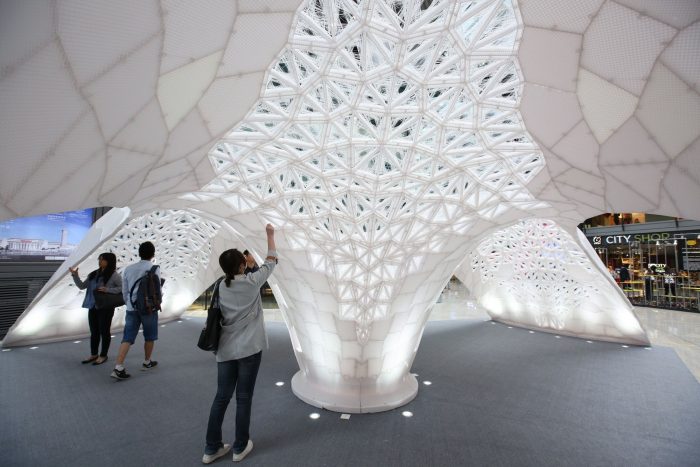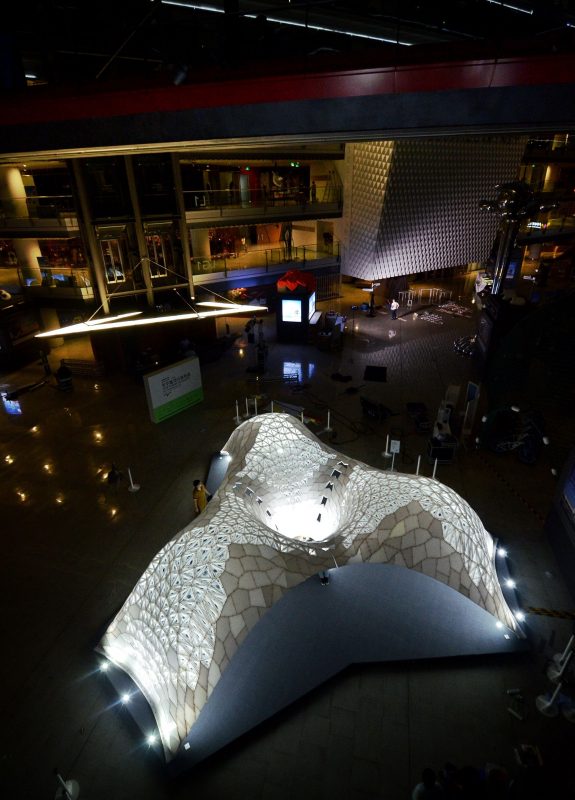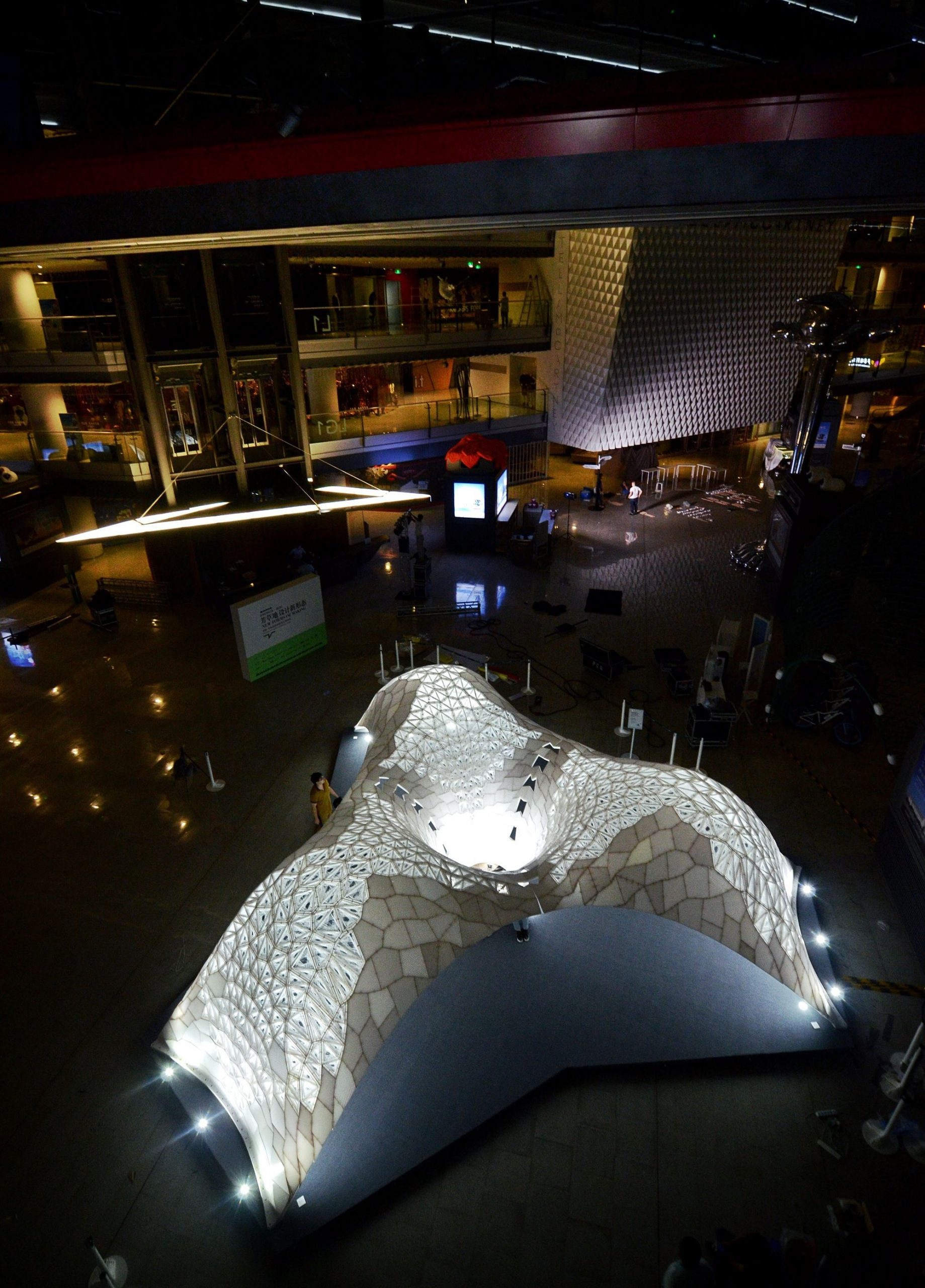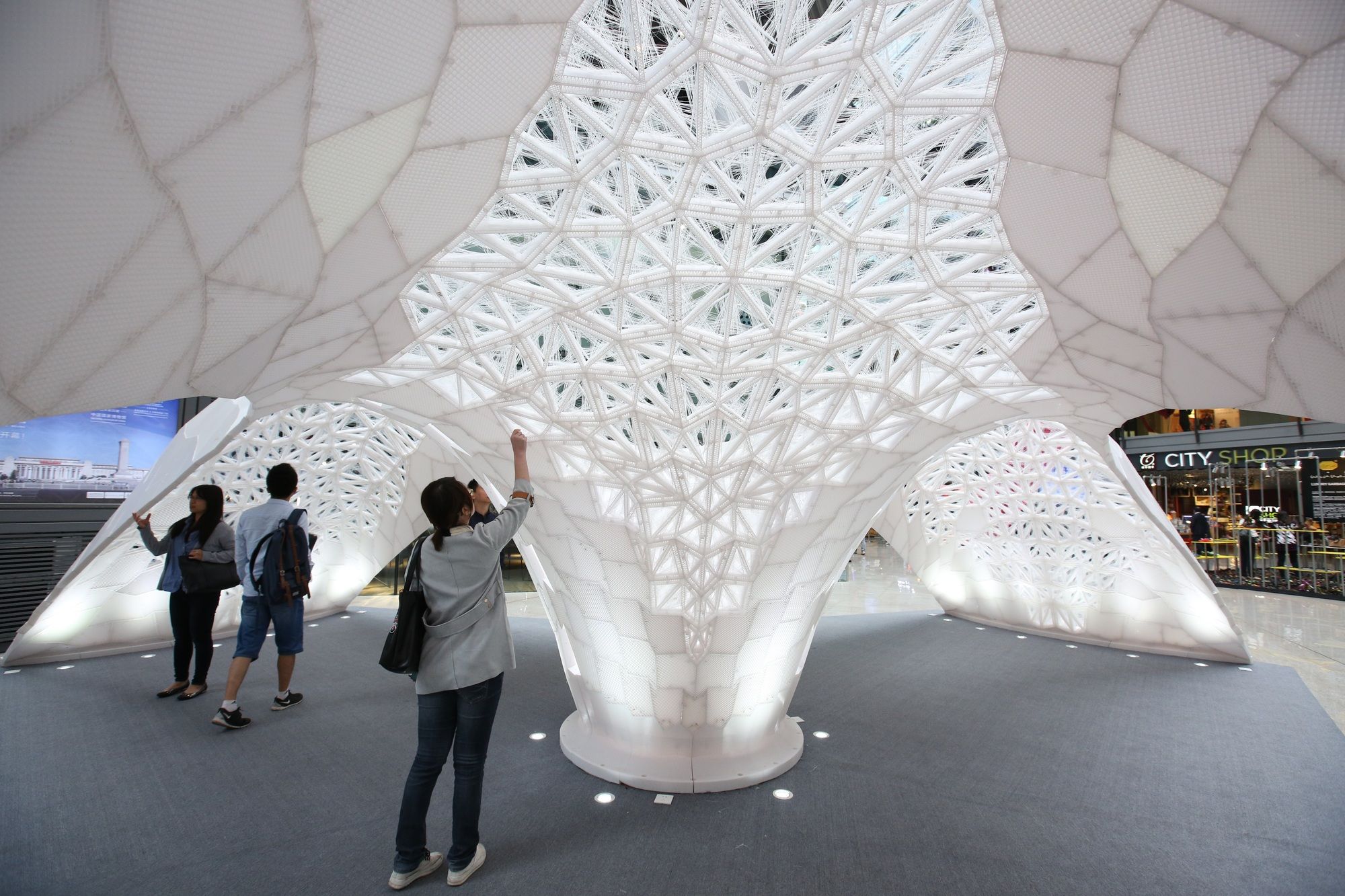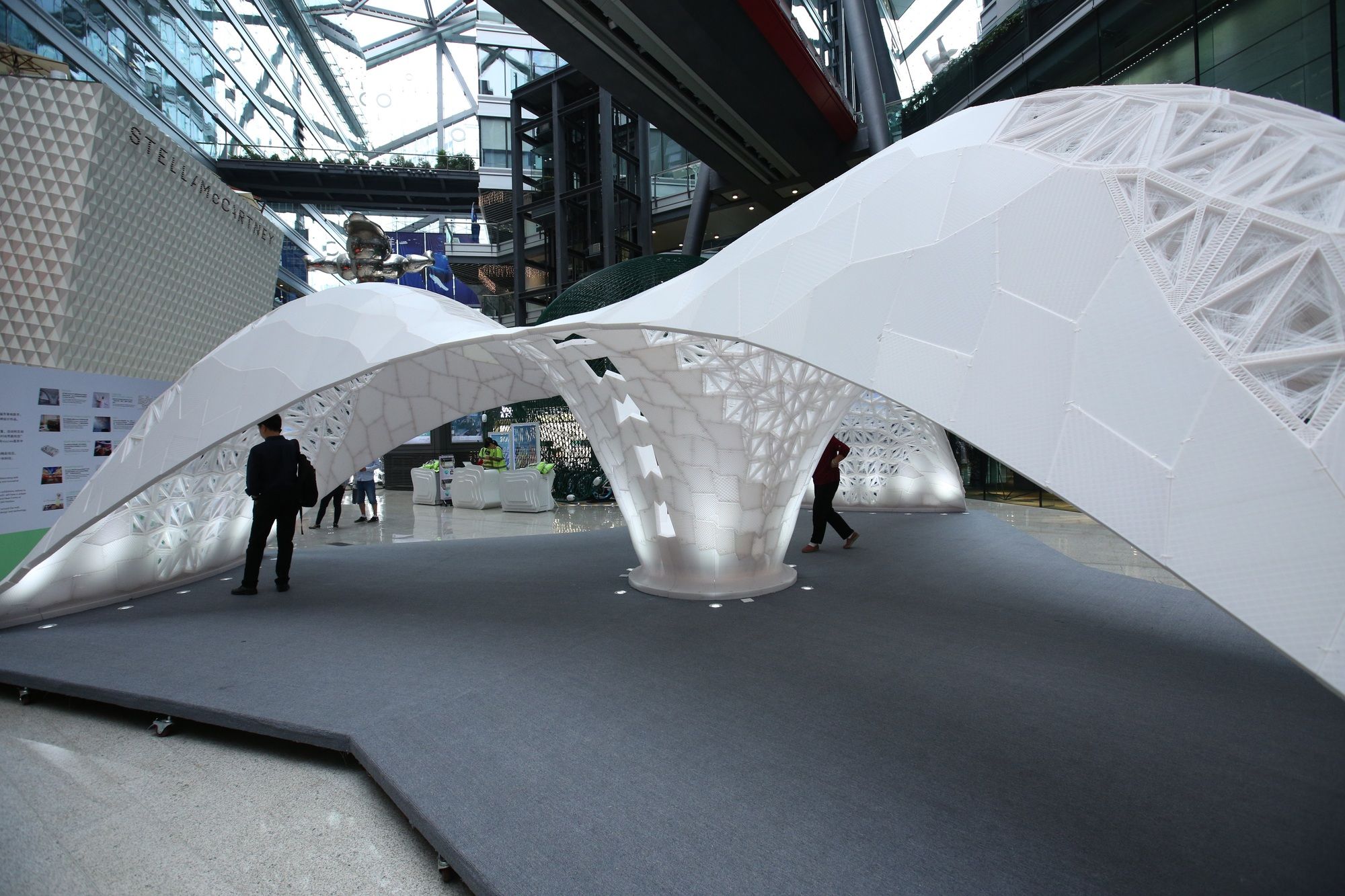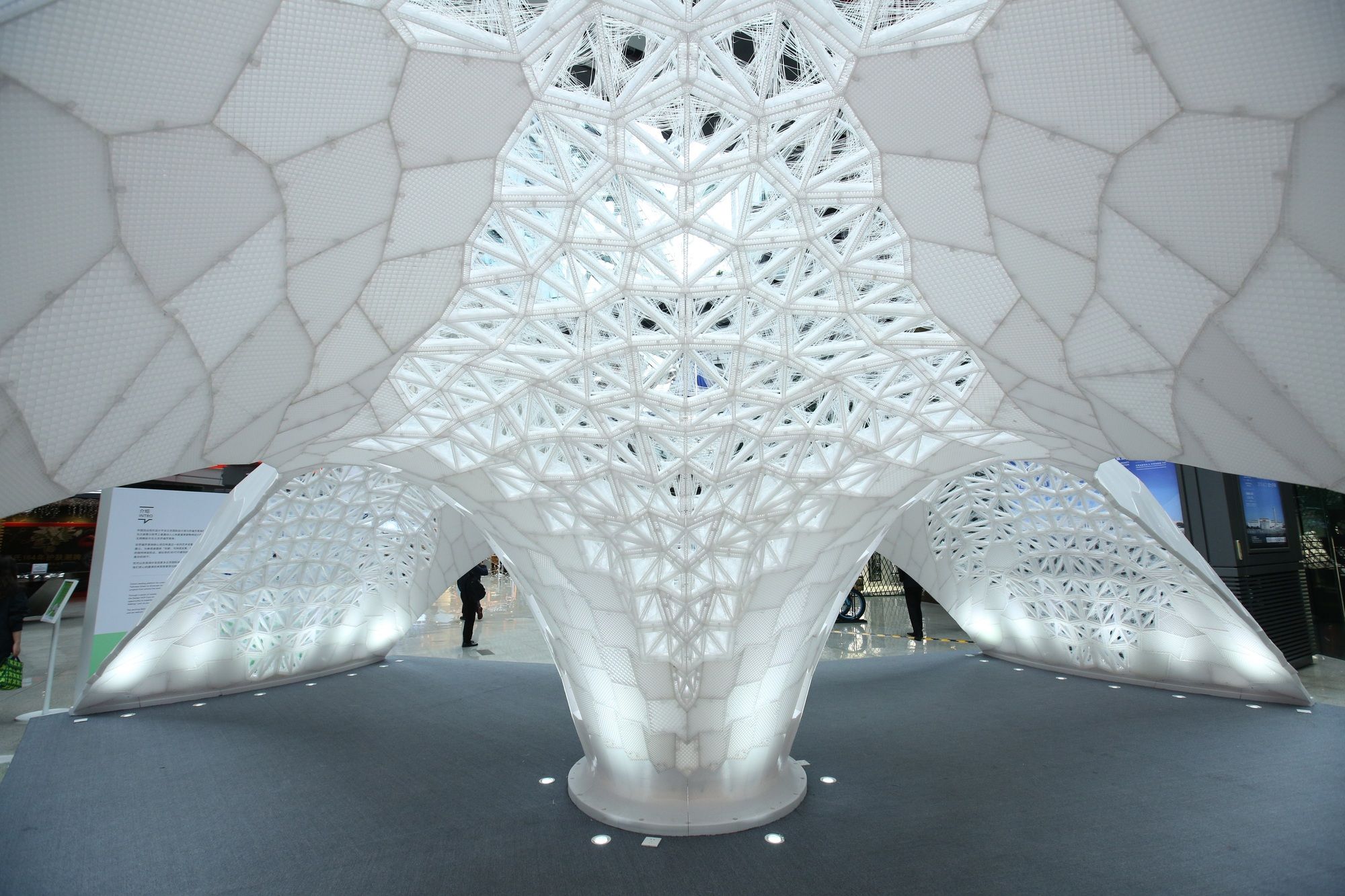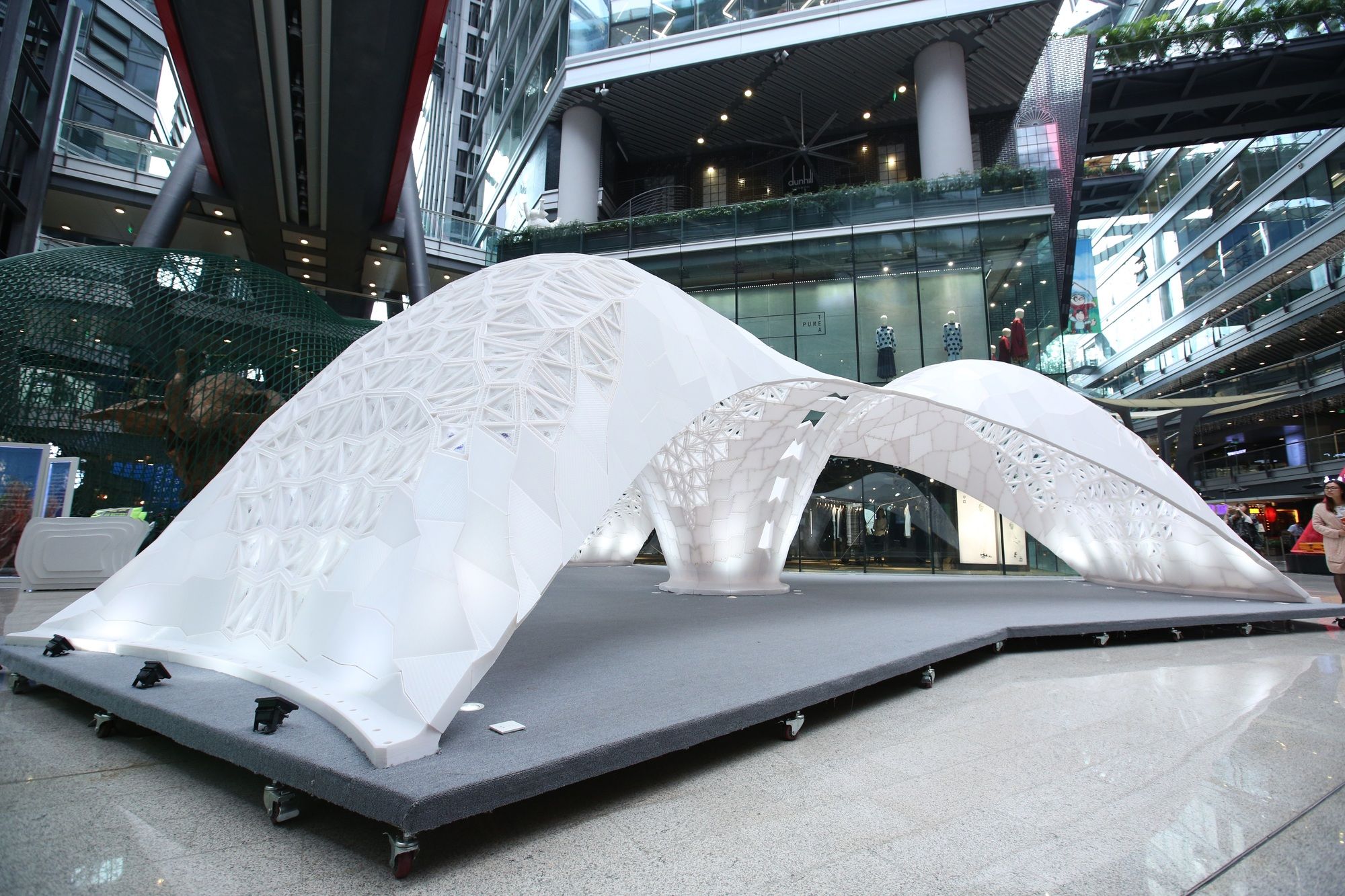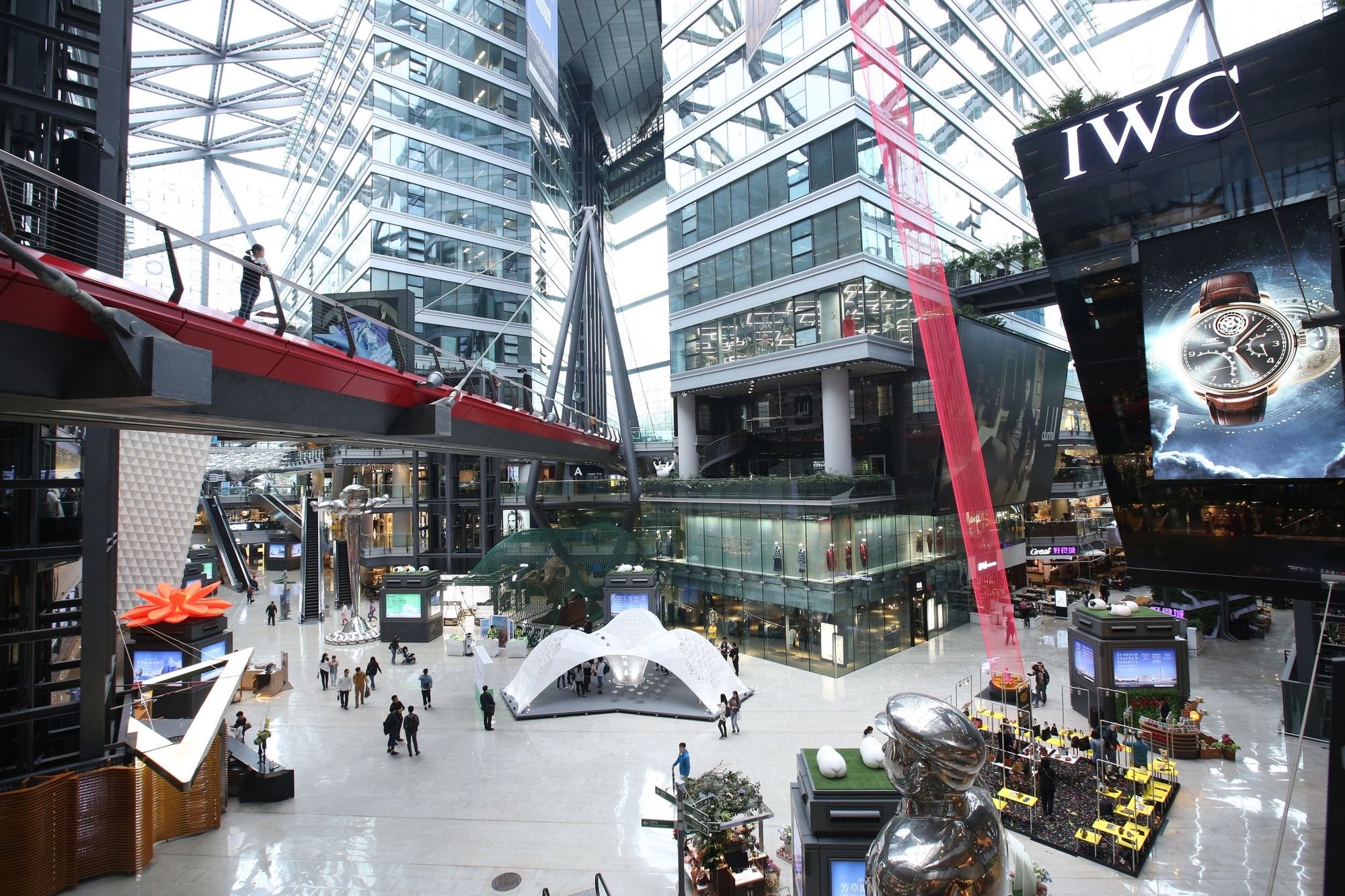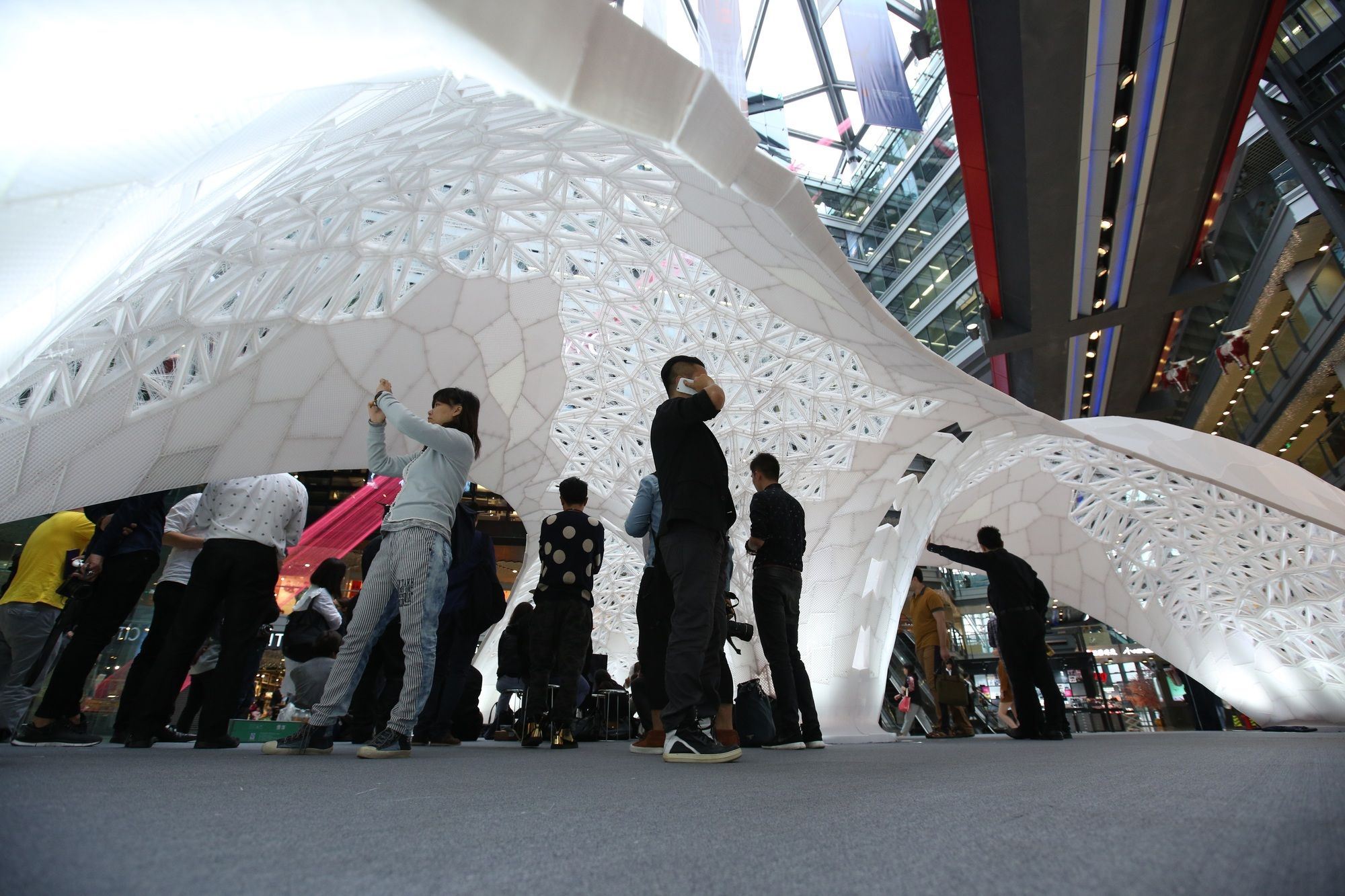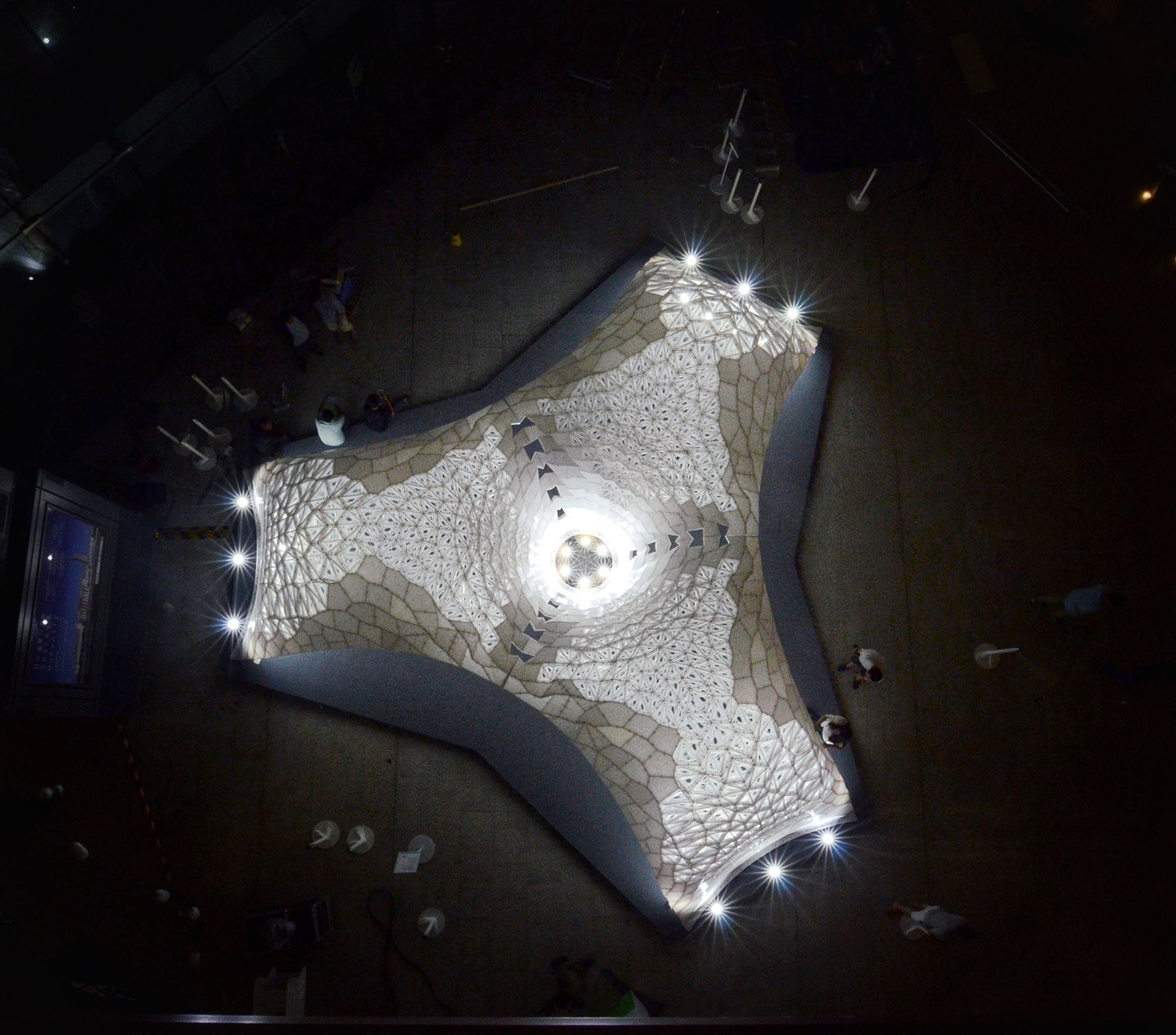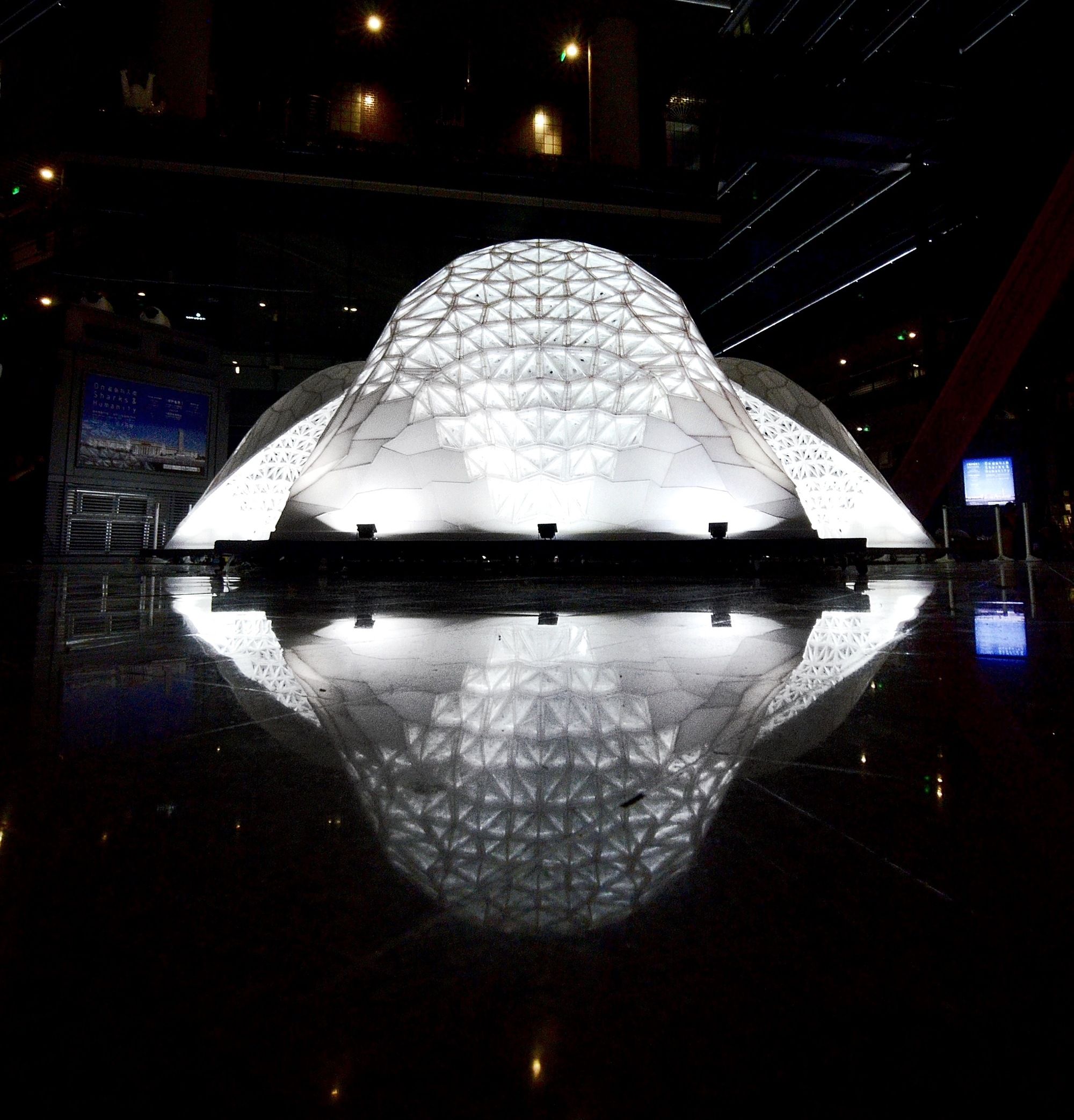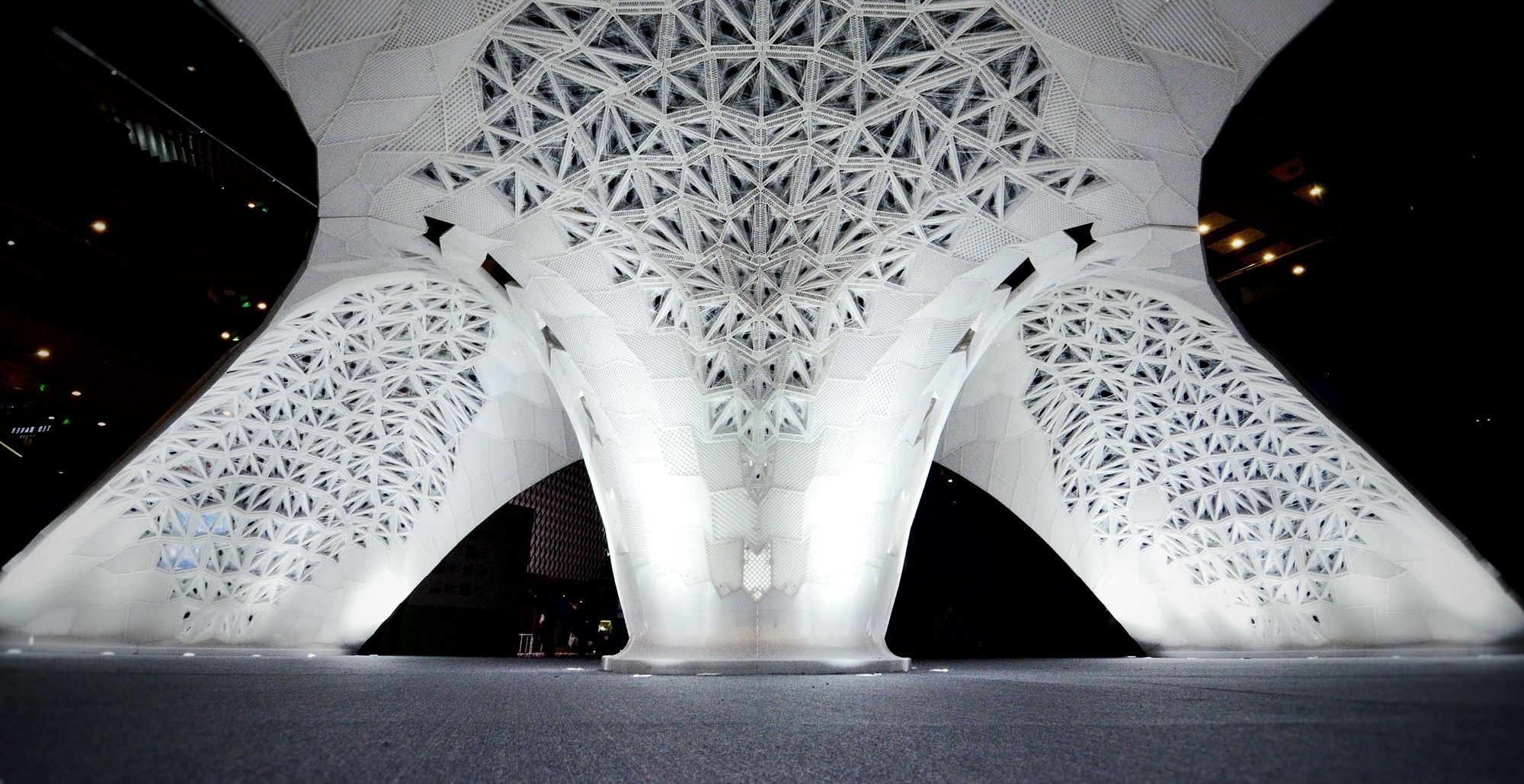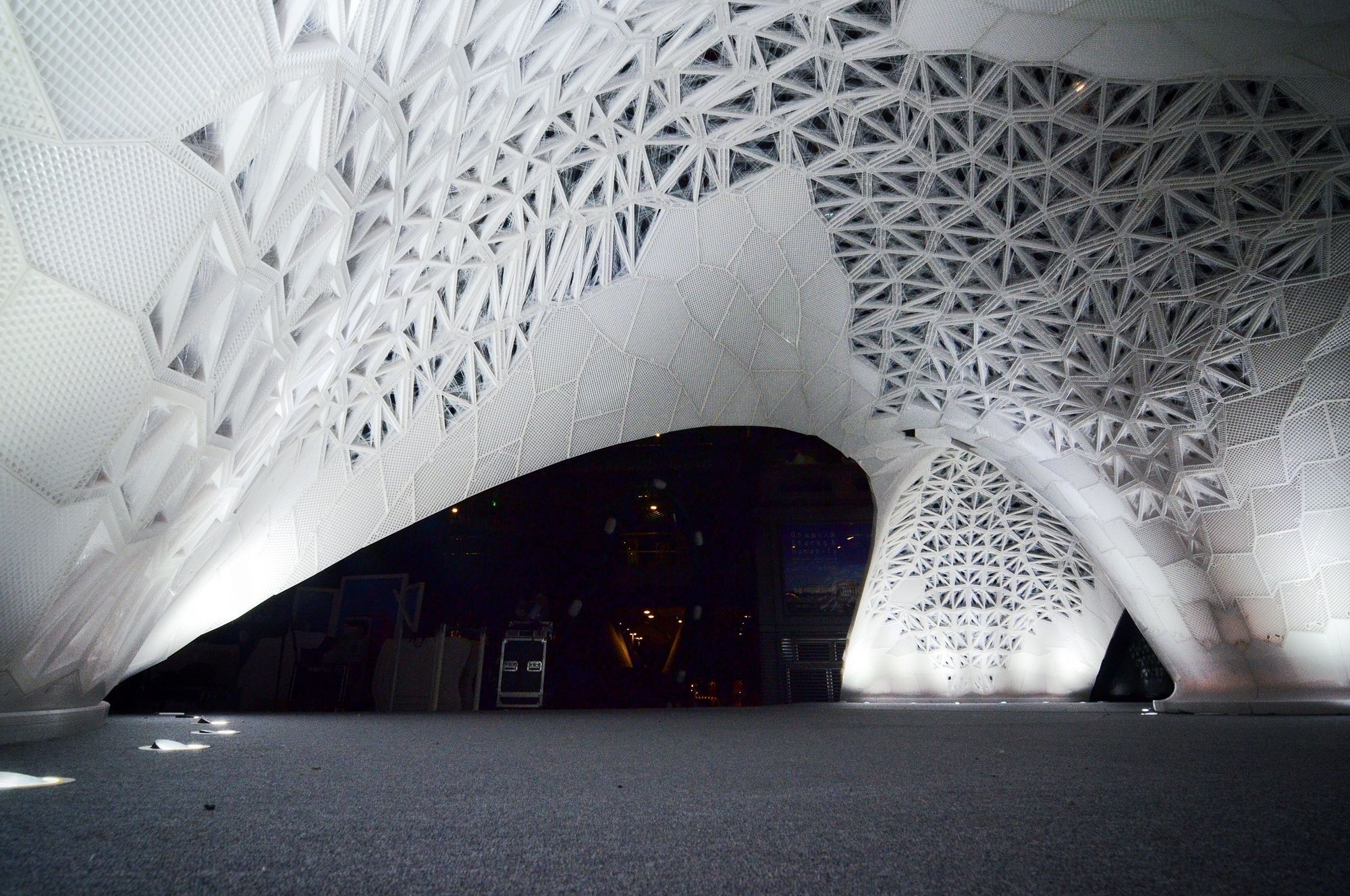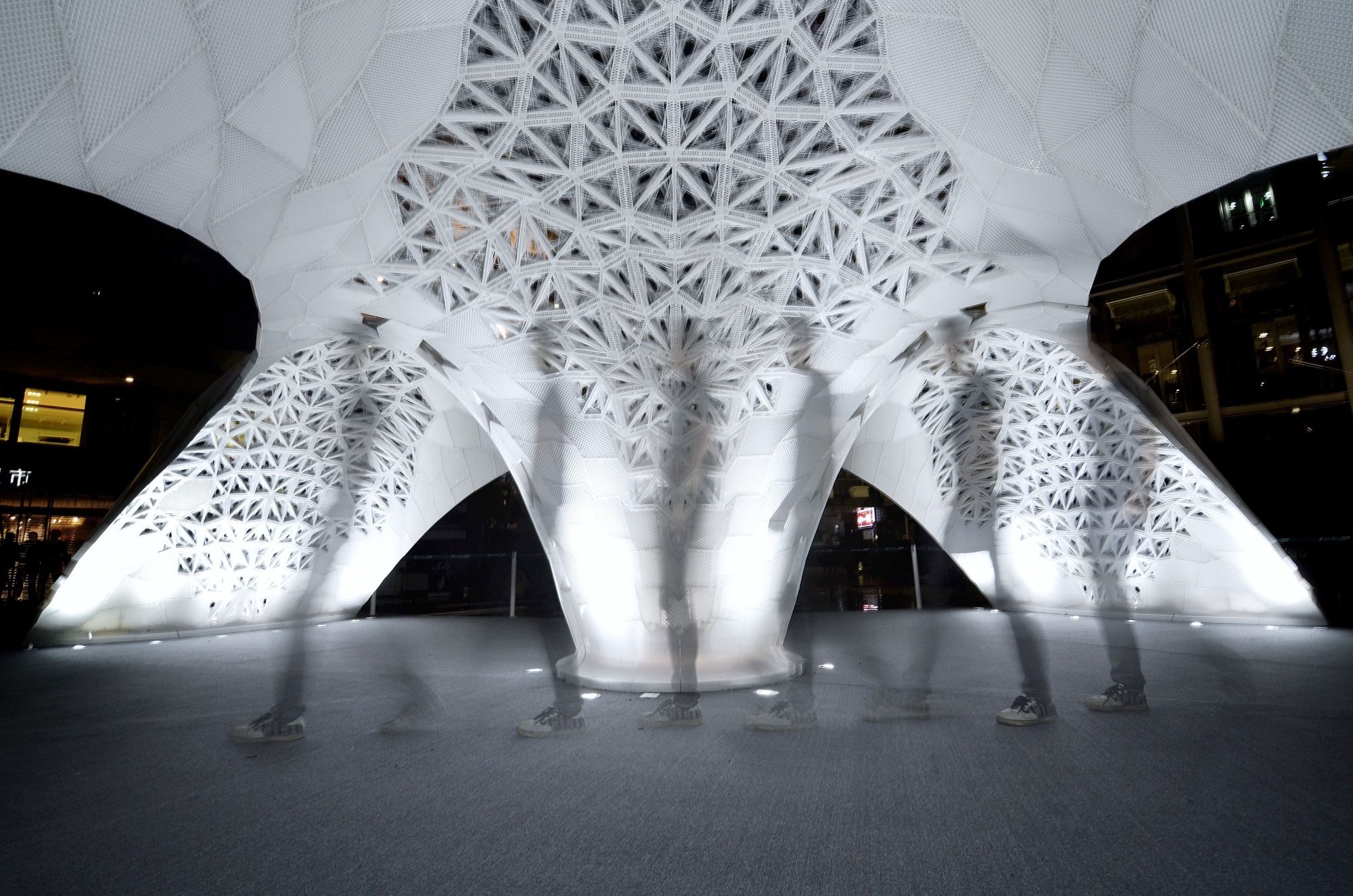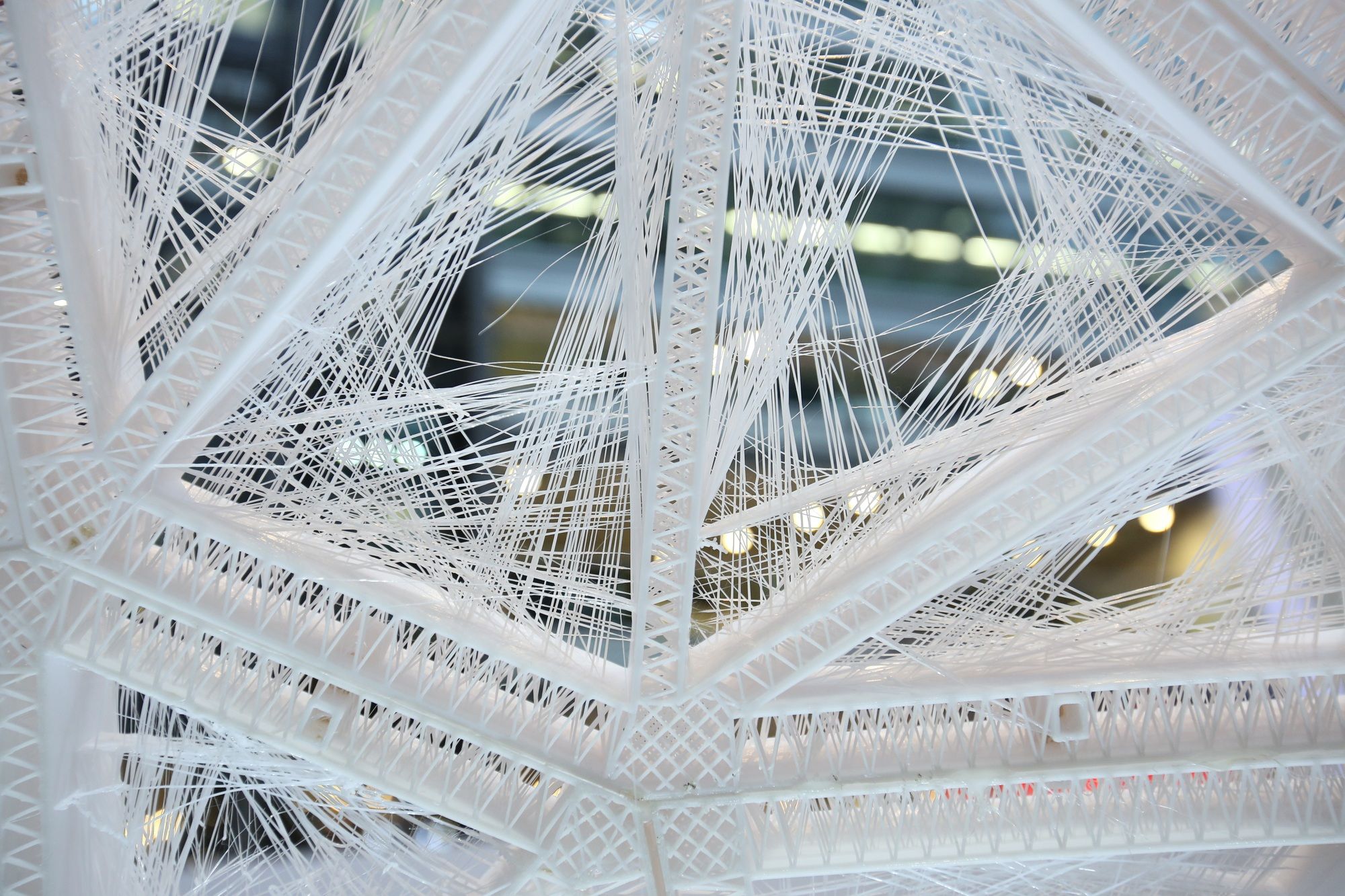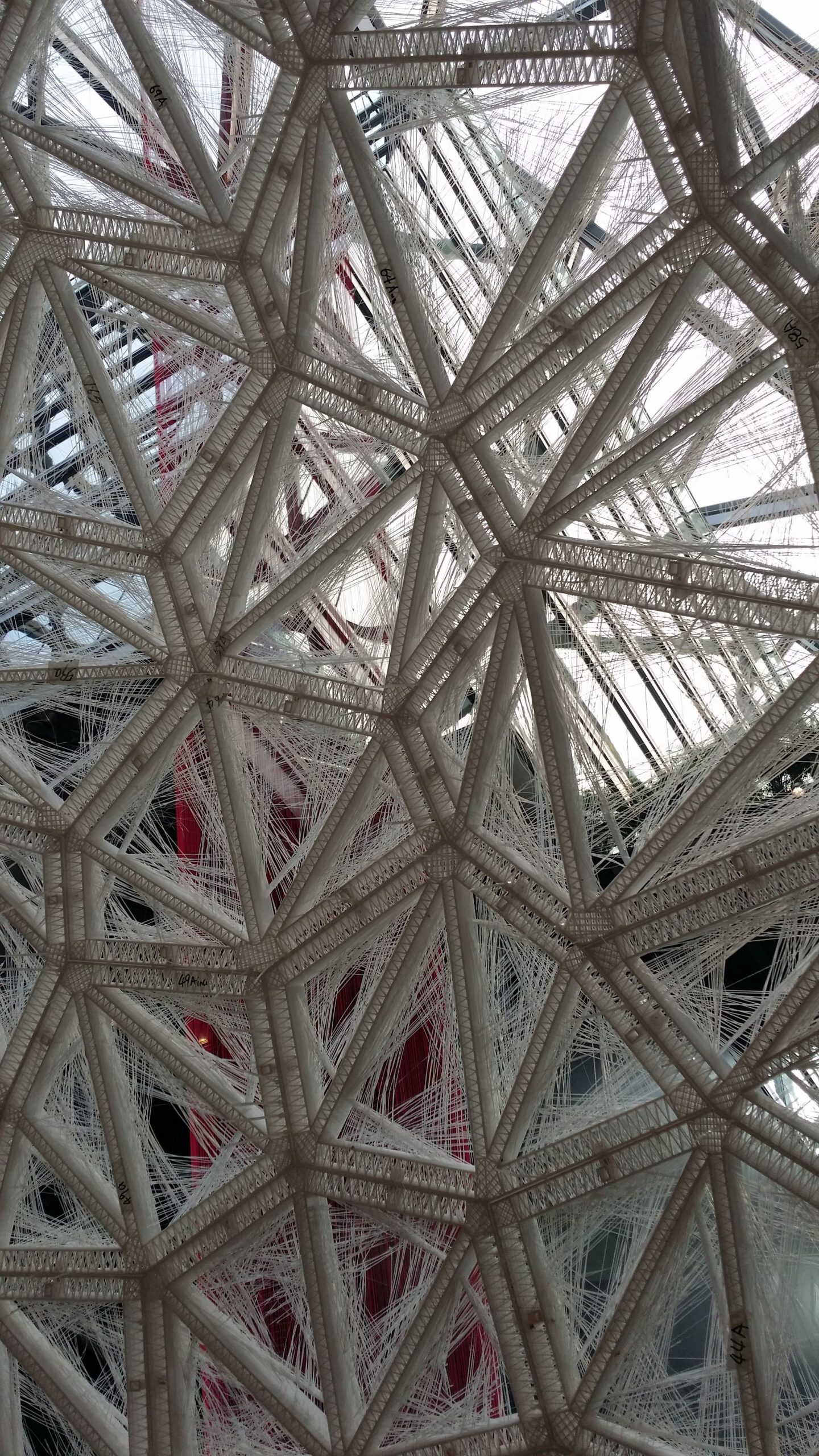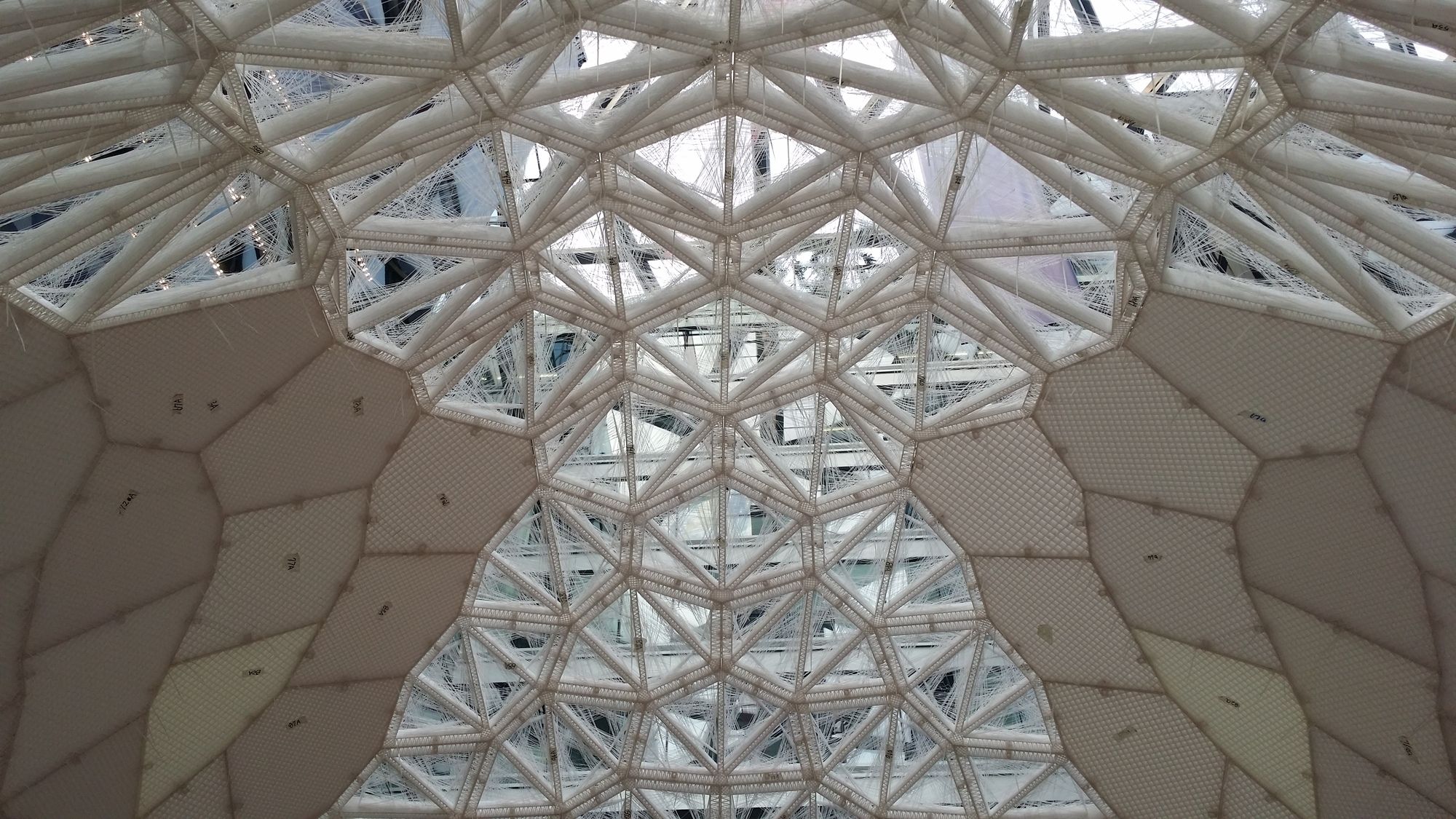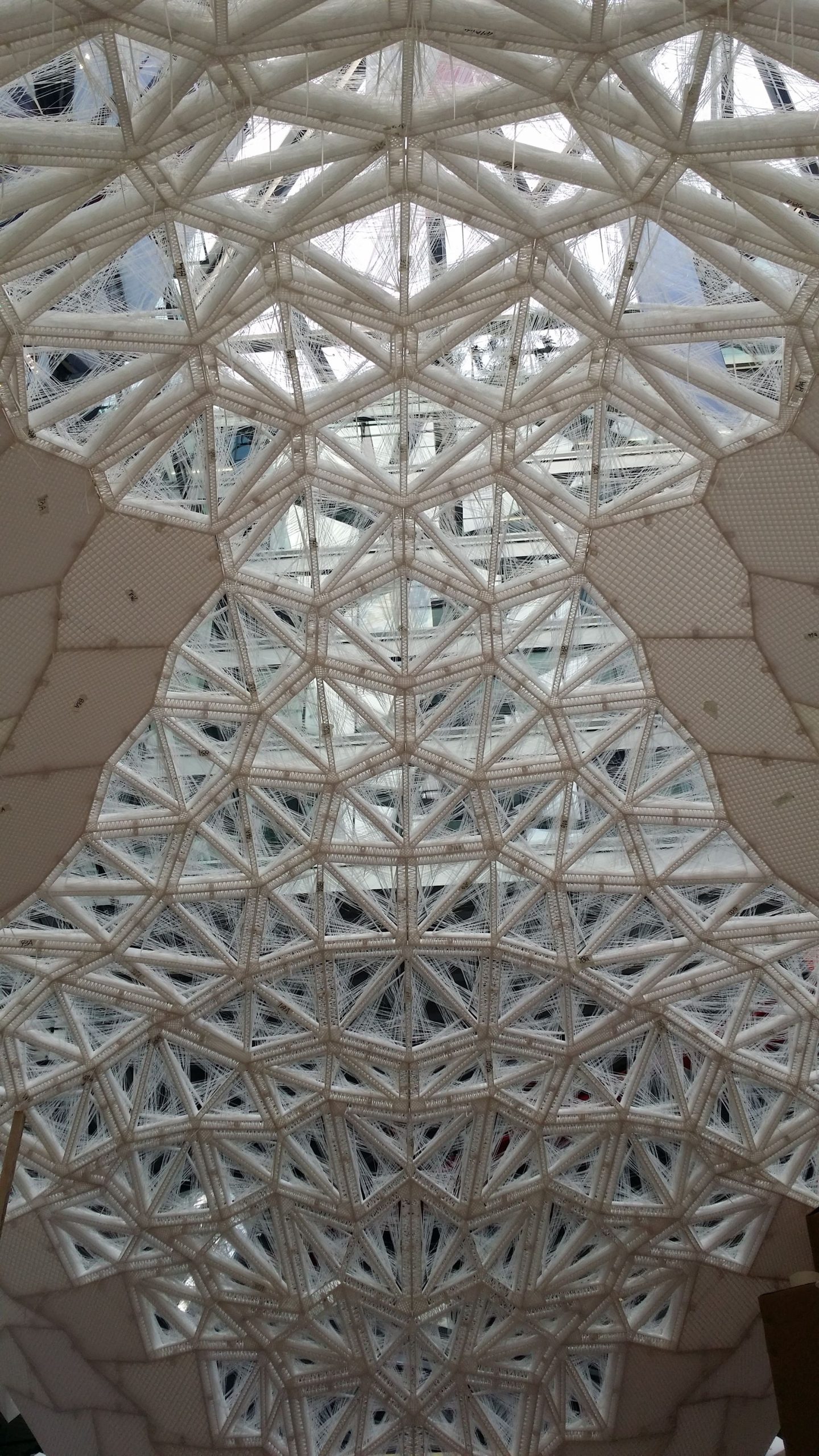Now in its fifth year, Beijing Design Week (BJDW) astonishes the world of design, innovation and technology with its ultimate trump. Though it looks like some extraterrestrial spacecraft, this beast ain’t one. This gigantic sci-fi object sitting in the atrium at Beijing’s Parkview Green is actually ‘Vulcan’, world’s largest 3D Printed pavilion. Spread across 8.08m length and standing 2.88m tall, this unprecedented structure is an assemblage of numerous 3D printed modules. With impressive dimensions such as these, Vulcan attains the title of ‘World’s largest 3D Printed Architectural Pavilion’ in the Guinness Book of World Records. A spatial entity conceptualized and realized by architects Yu Lei and Xu Feng from Laboratory for Creative Design (LCD), Beijing. As the name suggests, this pavilion conveys the essence of an erupting volcano, or the power of the Roman deity of fire. Etymologically, ‘Vulcan’ has Latin roots, translating to ‘Volcano’ in English. Volcano here symbolically depicts the transcendence of Nature, over and above the frail existence of humans. This tripodal pavilion is structured onto three inward arched tunnels, which lead to the central polyhedron core. With a sinuous membrane running all across its form, the aesthetics of the pavilion are majorly inspired from silkworm. The polygonal facets based on the simulation of silk and cocoon production were 3D printed with the help of 20 large 3D printers, by a team of 15 people. These 1086 pieces were assembled to form an eruptive installation, within a duration of 12 days.
LCD’s Yu Lei said “VULCAN takes precedent from LCD’s long term research in the spatial form of cocoons, where we constantly search for suitable methods for 3D printing and its artistic reinterpretations. In extrapolating the form from the cocoon’s biological parent body, we seek to combine the 3D printing and spatial construction processes with the activities at the Beijing international design week. It will create an open plan ‘parent body’ that can accommodate various activities for the public.” The design is geometrically divisible into three identical components, to maintain flexibility, mobility and the ease of assembly. These components are textured by enveloping filamentary membranes onto a triangular framework. These interwoven polymer layers and strands entangle to fill over each triangular aperture to form a complete webbed mesh. Further, some parts of the installation are designedly skinned to distinguish between the skeleton and the skin. “We are proud of this outstanding achievement that celebrates the strenuous work of LCD in bringing Vulcan to reality. This incredible endeavor positions Chinese design at center stage and reinforces BJDW’s efforts in supporting and promoting the best practices incubating in the PRC.’’ Beatrice Leanza, Creative Director of BJDW. BJDW has thus evoked global attention and support by using digital design and fabrication methodologies. For now, ‘Vulcan’ may be the biggest, but the rising popularity of 3D printing for experimental and radical designs suggests the prevailing potency of digital architecture.
By: Khushboo Vyas
Courtesy of Laboratory for Creative Design and Beijing Design Week
Courtesy of Laboratory for Creative Design and Beijing Design Week
Courtesy of Laboratory for Creative Design and Beijing Design Week
Courtesy of Laboratory for Creative Design and Beijing Design Week
Courtesy of Laboratory for Creative Design and Beijing Design Week
Courtesy of Laboratory for Creative Design and Beijing Design Week
Courtesy of Laboratory for Creative Design and Beijing Design Week
Courtesy of Laboratory for Creative Design and Beijing Design Week
Courtesy of Laboratory for Creative Design and Beijing Design Week
Courtesy of Laboratory for Creative Design and Beijing Design Week
Courtesy of Laboratory for Creative Design and Beijing Design Week
Courtesy of Laboratory for Creative Design and Beijing Design Week
Courtesy of Laboratory for Creative Design and Beijing Design Week
Courtesy of Laboratory for Creative Design and Beijing Design Week
Courtesy of Laboratory for Creative Design and Beijing Design Week
Courtesy of Laboratory for Creative Design and Beijing Design Week
Courtesy of Laboratory for Creative Design and Beijing Design Week


